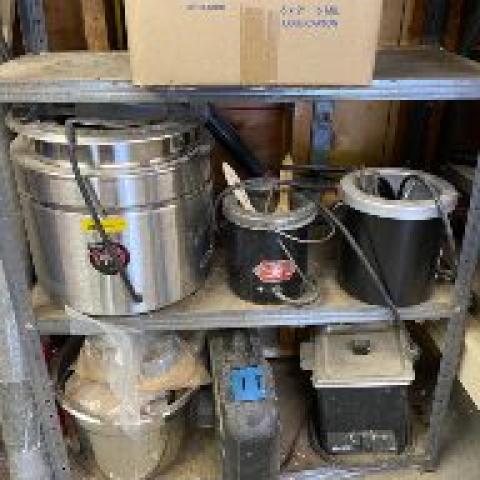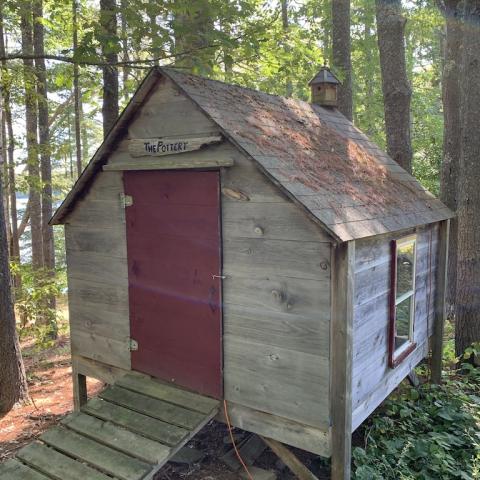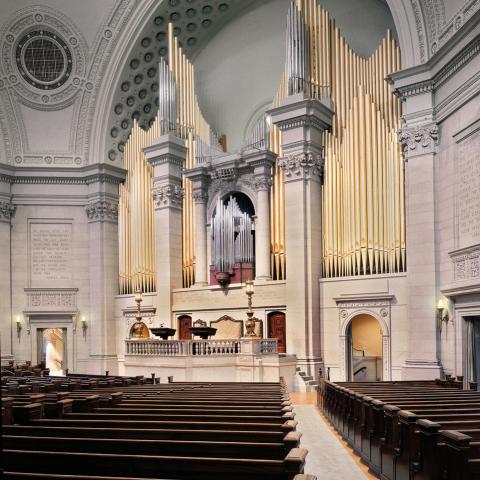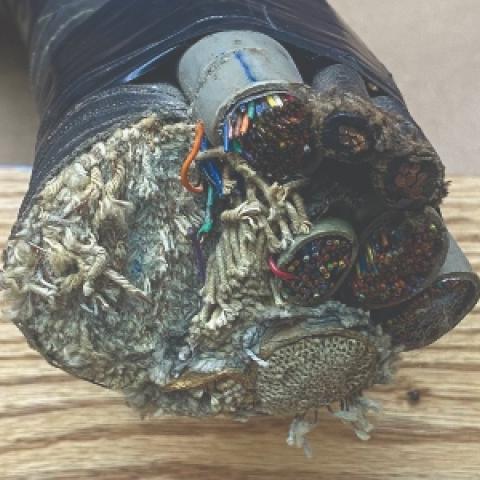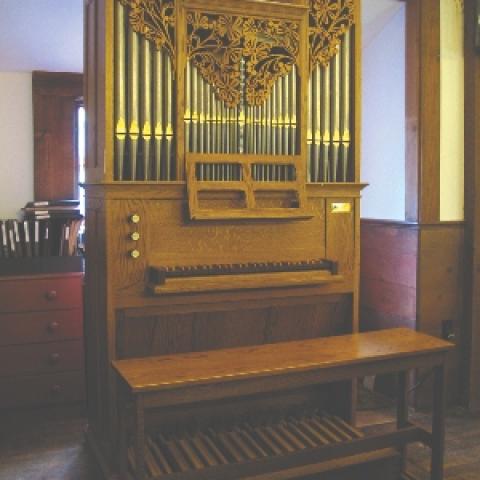
Control freaks
A little over a year ago, I bought a slightly used 2017 Chevrolet Suburban. It replaced a 2008 Suburban that I drove 250,000 miles. I prefer buying cars that have 10,000 or 15,000 miles on them because I think the first owner absorbs the loss of the “new car value,” and I get to buy a fancier car for less money. The first Suburban was black. Wendy thought Tony Soprano while I thought Barack Obama. My colleague Amory said “Special Agent Bishop” when I arrived at his house to pick him up. But the funnier thing was that while sitting in an on-street parking spot in New York City in the big black car, people would open the back door and get in, thinking I was the limo they had ordered. That happened several times, and each time brought a good shared laugh.
I like to have big, comfortable cars because I drive a lot (between 1985 and 2018, I drove six cars a total of nearly 1,250,000 miles, which is an average of about 38,000 miles a year), and because I carry big loads of tools, organ components, and, um, boat stuff. I can put an eight-foot rowing dinghy in the back of the Suburban and close the door. The new Suburban gets about forty percent more miles to the gallon. But the biggest difference is the electronics.
Sitting at a stoplight facing uphill, I move my foot from the brake to the accelerator to start moving, and a sign on the dashboard lights up, “Hillside brake assist active.” I am told that I am Driver #1 for the auto-set feature for seats and mirrors (and steering wheel and pedals). I am told when my phone connects to Bluetooth or when Wendy’s phone is not present in the car. I am told when the rain sensor is operating the wipers. I am told when my tire pressure is low. I am told when I am following a car too closely. And to the amusement of friends and family, and a little excitement for me, the driver’s seat buzzes when I get close to things like Jersey Barriers, trees, or other cars. It sounds like the gabbling of eider ducks when they are rafting together in big groups at sea.
The feature I like best is Apple CarPlay. When my phone is plugged into the charger, my Apple icons show up on the dashboard touchscreen giving me easy and safe access to Apple Maps, Google Maps, hands-free messaging, and phoning. I can activate Siri with a button on the steering wheel and place a call or record a reminder, so I have no excuse for forgetting things. One of the icons is my Audible account so I can listen to my library of ebooks as I drive.
I expect there is a downside to all these gadgets. Any organbuilder knows that there is a whopper of a wiring harness snaking through the car and a CPU somewhere deep in the bowels of the vehicle, and I imagine that the most expensive repairs I will face down the road will be correcting cranky electronics.
One thing leads to another.
I am thinking about electronic controls because I was amused recently by a post on Facebook by Damin Spritzer1 who wrote, “Does anyone else have anxiety dreams about Sequencers? *Laughs weakly and makes more coffee.*” There ensued a flurry of responses, some thoughtful and provocative, some ridiculous, and some downright stupid. This conversation brought to my mind several themes I have developed over the years about the advances of pipe organ control systems and various colleagues’ reactions to the relevance, convenience, and pitfalls of new generations of this equipment.
In the late 1980s, I took over the care of the heroic Aeolian-Skinner organ at The First Church of Christ, Scientist (The Mother Church), in Boston, Massachusetts. With 237 ranks and well over 13,000 pipes, this was quite a responsibility. Jason McKown, then in his eighties, who had worked personally with Ernest Skinner in the 1920s, was retiring after decades of service, and before I arrived, the church had contracted with another organ company to install a solid-state switching and combination system. Jason’s comment was simple, “This is for you young guys.” I was present to help with that installation, and, of course, was responsible for maintaining it. That was before the days of effective lightning protection, and whenever there was a thunderstorm, we had to reprogram the Crescendo memory. I had a helper who memorized that huge list of stops, and I could trust her to drop by and punch it in.
Marie-Madeleine Duruflé played a recital at Boston’s Trinity Church for the 1990 convention of the American Guild of Organists. A few days before she was to arrive to prepare for her performance, the solid-state combination system in the organ stopped working and the organ went dead. The company that built the system sent a technician with a bale of spare cards, and we worked through two nights to get the organ running again, just in time for Madame Duruflé to work her magic.
The Newberry Memorial Organ in Woolsey Hall at Yale University is one of the great monuments of twentieth-century organbuilding. With more than a 165 voices and over 12,500 pipes, it is high on the magic list of the largest Skinner organs, and Nick Thompson-Allen and Joe Dzeda have been its curators for over fifty years. Nick’s father, Aubrey Thompson-Allen, started caring for the organ in 1952. That huge organ is played regularly by dozens of different people, and one might expect that a combination system with multiple levels would have been installed promptly there. But at first, Joe and Nick resisted that change, correctly insisting that the original equipment built by Ernest Skinner’s people must be preserved as a pristine example of that historic art and technology.
However, along with Yale’s teachers, they understood that the change would be a big advantage for all involved, including the durability of the organ itself. Knowing that the cotton-covered wire used in Skinner organs would soon be no longer available, they proactively purchased a big supply. At their request, Richard Houghton devised a plan that added 256 levels of solid-state memory while retaining the original combination action and retaining the original electro-pneumatic actions to operate the drawknobs and tilting tablets as pistons were pushed and settings engaged. Houghton was sensitive to all aspects of the situation, and the 1928 console still functions as it did ninety-one years ago, while serving the procession of brilliant students and performers who use that organ for lessons, practice, and performance. The addition of the new equipment was accomplished with great skill in the spirit of Mr. Skinner under Joe and Nick’s supervision. Neat bundles of green and red cotton-covered wire wrapped in friction tape connect the hundreds of circuits of the console to the new unit, just as if it had been installed by Mr. Skinner’s workers in 1928. A side benefit was the elimination of countless hours spent resetting pistons as each organist took to the bench, hours lost for valuable practice, hours when the huge blower was running to support that mundane task.
Next
The sequencers to which Dr. Spritzer was referring are accessory functions of the more advanced solid-state combination systems that allow an organist to set sequences of pistons whose individual settings are advanced during performance by repeatedly pressing a piston or toe stud labeled “Next.” In addition, some systems allow the organist to program which pistons would be “Next,” so some make all the buttons have that function, while others choose buttons that are easy to reach and difficult to miss.
There is a steep learning curve in gaining proficiency with sequencers. It is easy enough to punch a wrong button or to fail to insert an intended step, so double-checking before performing is advised. And malfunctions happen, leaving a performer stranded with an unintended registration in the heat of battle. In thirty-six hours, Dr. Spritzer’s post attracted 135 “Likes” and 185 responses from organists who have had those magic moments. The brilliant performer Katelyn Emerson chimed in, “When the sequencer jumped no fewer than 16 generals on the third to last page of Liszt’s Ad nos, and I landed on nothing more than an 8′ Gamba, I had nightmares for weeks.” Reading that, I thought, “If it can happen to her, it can happen to anyone.”
Here are a few other replies to Dr. Spritzer’s post:
“No music was written for sequencers, so I don’t use them.”
“Didn’t have to dream it. I lived it.”
“When forward and back are unlabeled brass pedals one inch apart, only mayhem will ensue.”
“I just stick to mechanical action.”
“You know, I’m a sequencer phobic. I’ve had situations where I hit it and it zipped up five pistons.”
“Petrified of the things . . . . Yes, that’s why I never use them.”
Any colleague organbuilder who has or might consider installing a sequencer in an organ console should jump on Facebook (or get a friend to help you), find Dr. Spritzer’s post, and read this string of responses.
There are two basic ways that piston sequencers work. One is that you set all the pistons you need, and then set them in a chosen sequence. You can reuse individual settings as often as you would like, and there is no meaningful limit to the number of steps in a saved sequence. You can go back and edit your sequence, adding or deleting settings mid-way through. This is sometimes referred to as the “American” system.
The “European” system is a little different. It runs through General pistons in order, then scrolls up to the next level of memory and runs through them again. The scrolling continues through all the levels. This seems limiting, because it specifies exactly the order in which you must set pistons, and if you want to return to a setting, you have to program another piston the same way. In both styles, there is typically an LED readout on the console showing the current step in the sequence, and which piston it is, and if there isn’t, there should be.
If there are so many pitfalls, why bother? One of the great things about the state of the pipe organ today is that there are so many brilliant players who concertize around the world. If you perform on twenty or thirty different organs each year, especially those with big complicated consoles, you might take comfort in finding handy gadgets that are common to many of them. If you are adept and comfortable using sequencers, you do not have to go fishing around a big complex console looking for Swell 1, Great to Pedal, General 22, Positiv to Great 51⁄3′, Great 6, All 32′ Stops Off. You just keep hitting “Next.” Some consoles are equipped with “Next” buttons up high, so your page-turner can press it. (If you need that kind of help, maybe you should try the autoharp.)
Some teachers discourage the use of sequencers. Stephen Schnurr, editorial director and publisher of The Diapason, wrote that he “forbids” his students to use them in public performances at Valparaiso University where he teaches. He confirmed my guess, that he is encouraging them to “stand on their own two feet” and learn to play the organ seriously “the old-fashioned way.” That reminds me of my apprenticeship in Jan Leek’s workshop in Oberlin, Ohio, where he made sure I could cut a piece of wood straight and square by hand before teaching me the use of the super-accurate stationary machines. Further, Schnurr believes it is important that students do not rely on sequencers so heavily that they are bamboozled when faced with a console that does not have one. After all, I would guess that well over half of all organs do not have piston sequencers.
Looking at the other side of the issue, a few months ago, the Organ Clearing House installed a practice organ at the University of Washington, specially intended to expose students to the latest gadgets. We expanded a Möller Double Artiste to include a third independent unified division and provided a three-manual drawknob console with a comprehensive solid-state combination action that includes a sequencer. The organ allows students to develop proficiency using a sequencer in the safety of a practice room. It also features two independent expression boxes.
The old-fashioned way
The Illinois organbuilder John-Paul Buzard drives “Bunnie,” his Model A Ford, across the picturesque countryside, sometimes alone, and sometimes in the company of fellow members of a club of Model A owners. It looks like a ton of fun and great camaraderie, especially as club members help each other through repairs. Nevertheless, I will bet he uses a vehicle that is more up to date in the context of daily life. I am not an expert, but I am guessing that the Model A would be taxed if pressed into the mileage-hungry travel routines of an active organ guy. The Michelin radial tires on my whiz-bang Suburban are much better suited for endless hours at, um, eighty miles-per-hour than the 4.75 x 19 tires on the Model A.
In 1875, E. & G. G. Hook & Hastings built a spectacular organ with seventy stops and 101 ranks (Opus 801) for the Cathedral of the Holy Cross in Boston, Massachusetts. The company’s workshop was within walking distance, and Frank Hastings reveled in taking potential clients to see it. It was equipped with a pneumatic Barker lever to assist the extensive mechanical keyboard and coupler actions, ten registering composition pedals, and a fourteen-stop Pedal division, complete with four 16′ flues, a 12′ Quint, and a 32′ Contra Bourdon. Anyone familiar with the construction of such organs knows that represents about an acre of windchest tables.
Thirty-one years later, in 1906, the Ernest M. Skinner Company built a four-manual, eighty-four-rank organ (Opus 150) for the Cathedral of Saint John the Divine in New York, New York. That organ had electro-pneumatic action throughout, pitman windchests, and an electro-pneumatic combination action with pistons and a crescendo pedal. That is a quantum leap in pipe organ technology in thirty-one years.
Look back to the iconic Cavaillé-Coll organ at St. Sulpice in Paris, France, built in 1860. This was likely the most advanced instrument of its time, and the myriad original mechanical and pneumatic registration machines are still in use. We can reproduce how Widor, Dupré, and countless other genius players managed that massive instrument (although the presence of an electric blower takes away some of the original charm—it must have been quite a chore to maintain a brigade of organ pumpers to get through performances of Widor’s organ symphonies). Louis-James Alfred Lefébure-Wély was the organist there when the instrument was new, but Cavaillé-Coll realized that he was not the equal of the instrument and championed Widor as the next titulaire. Widor exploited the vast tonal resources of that great organ transforming the art of organ playing, inspired and enabled by Cavaillé-Coll’s technological innovations.
Ernest Skinner, with his comprehensive combination-actions, helped enable innovative artists like Lynwood Farnam develop new styles of playing. Widor and Farnam were apparently not above using complex and newly developed controls to enhance their command of their instruments. Their organbuilders demanded it of them.
I first worked with solid-state combinations in the late 1970s. Those systems were primitive, and excepting the revolutionary availability of two levels of memory, they had pretty much the same capabilities as traditional electric and electro-pneumatic systems. As the systems got more complex, they were sensitive to flukes like lightning strikes, and their developers worked hard to improve them. Recently I commented to a colleague that we all know that Mr. Skinner’s systems could fail. A hole in a piece of leather could mean that the Harmonic Flute would not set on divisional pistons. He agreed but replied that a good organ technician with a properly stocked tool kit could open up the machine and fix the problem in an hour or so. Some organbuilders are now proficient with electronic repairs, while others of us rely on phone support from the factory and next-day shipment of replacement parts to correct problems.
§
I could repair almost anything in my first car. There were two carburetors, a mechanical throttle, a manual choke, and an ignition rotor. When you open the hood of my Suburban, you see some plastic cowls and some wires and assume there is a cast engine block down in there. To start the car, I step on the brake and push a button. The key must be present, but it stays in my pocket. If I leave the key in the car and shut the doors, the horn gives three quick toots, telling me that the car knows better than to lock the doors. But I suppose someday it will smirk, toot twice, and lock me out.
Next.
Notes
1. Dr. Damin Spritzer is assistant professor of organ at the American Organ Institute of the University of Oklahoma, Norman, artist in residence at the Cathedral Church of St. Matthew in Dallas, Texas, and an active international recitalist. You can read more about her at http://www.ou.edu/aoi/about/directory/spritzer-bio.


